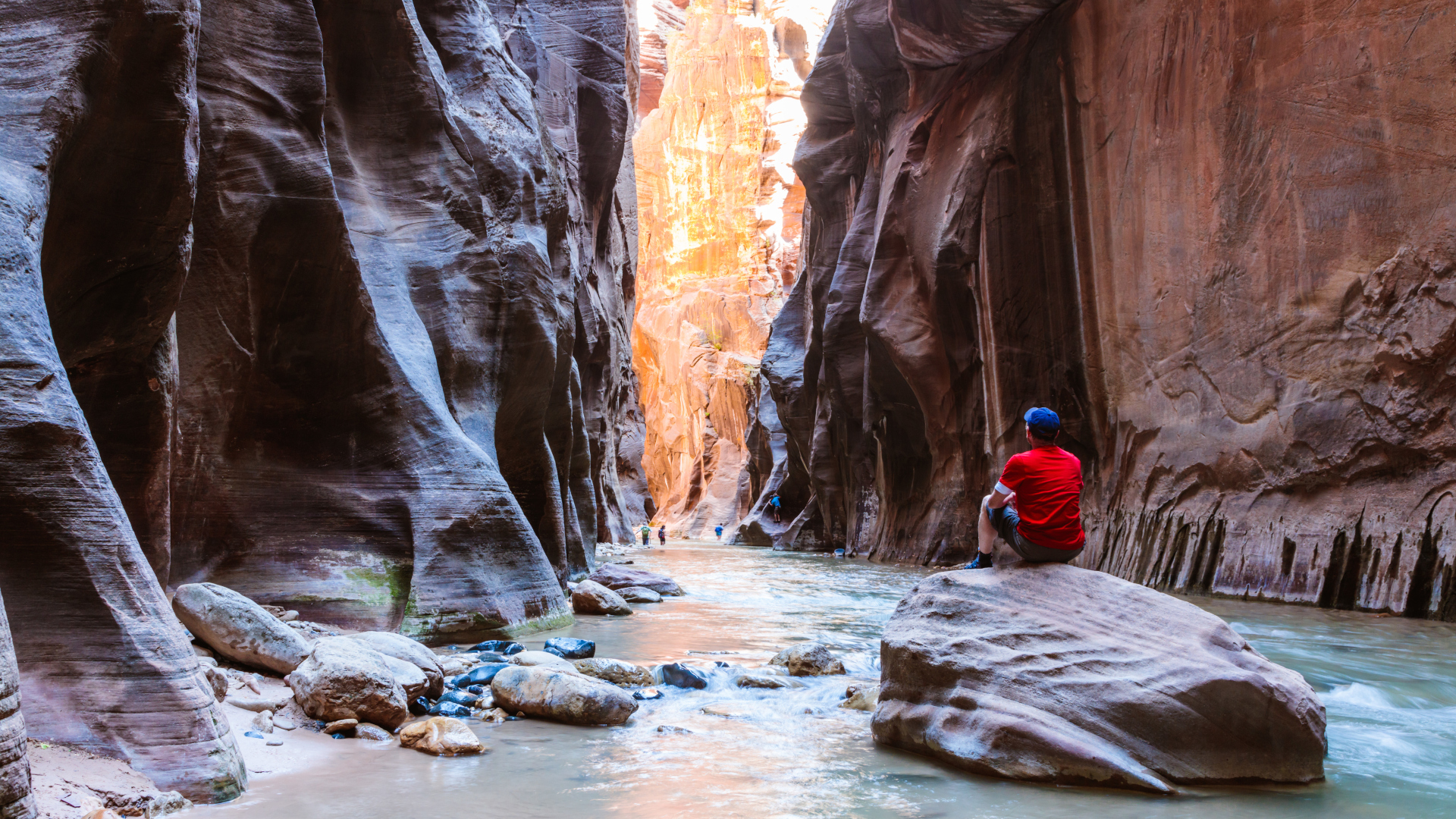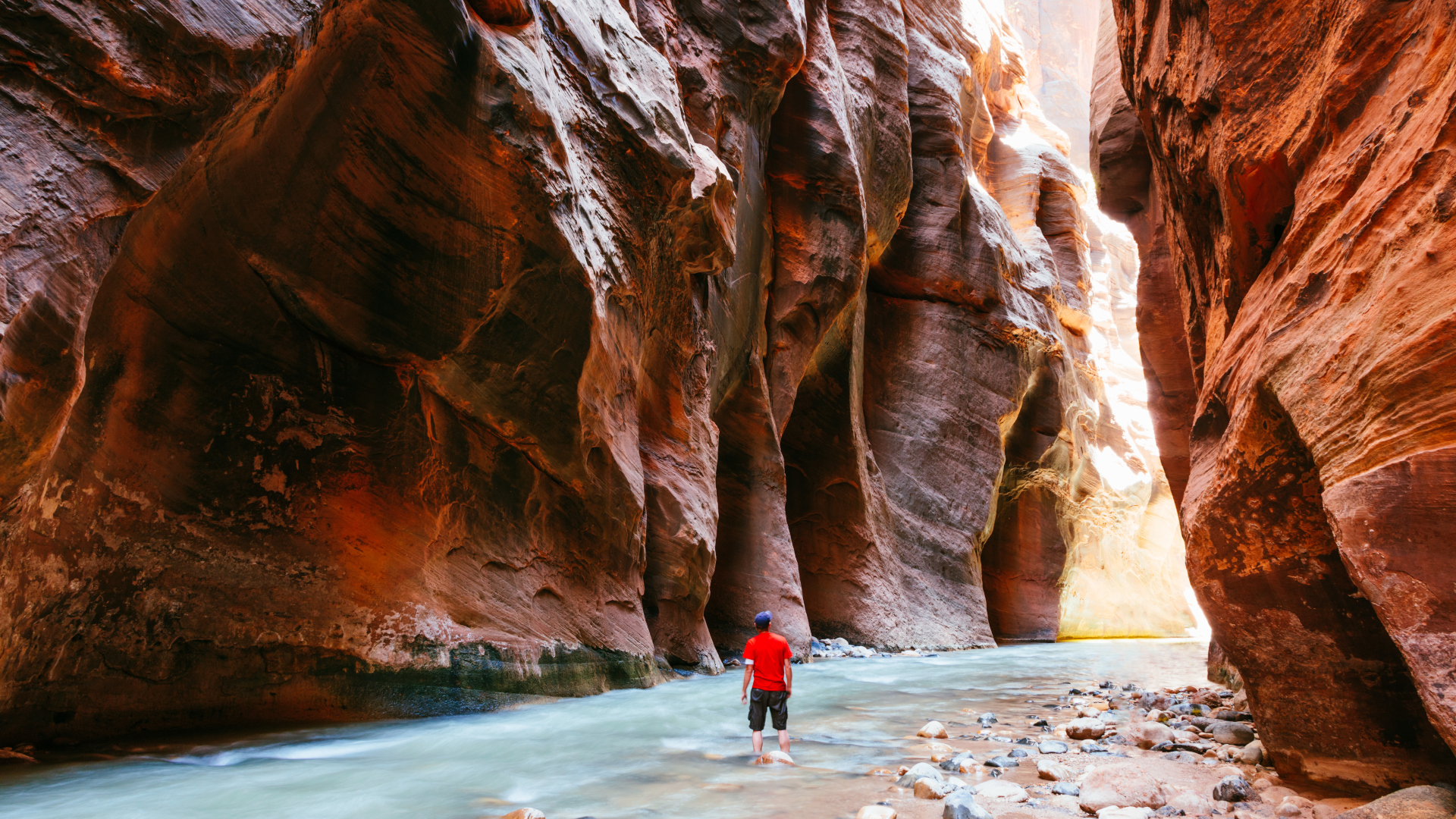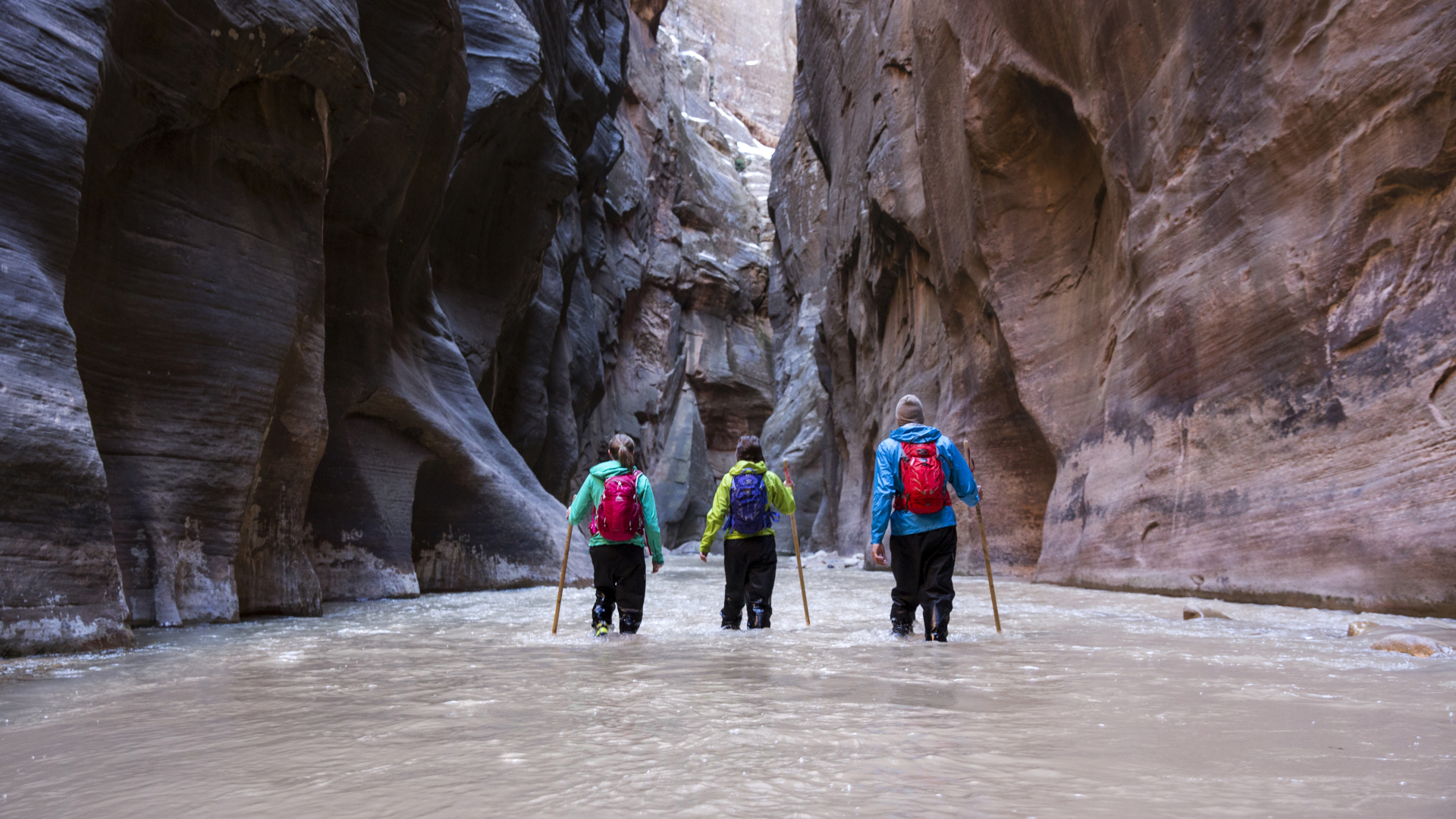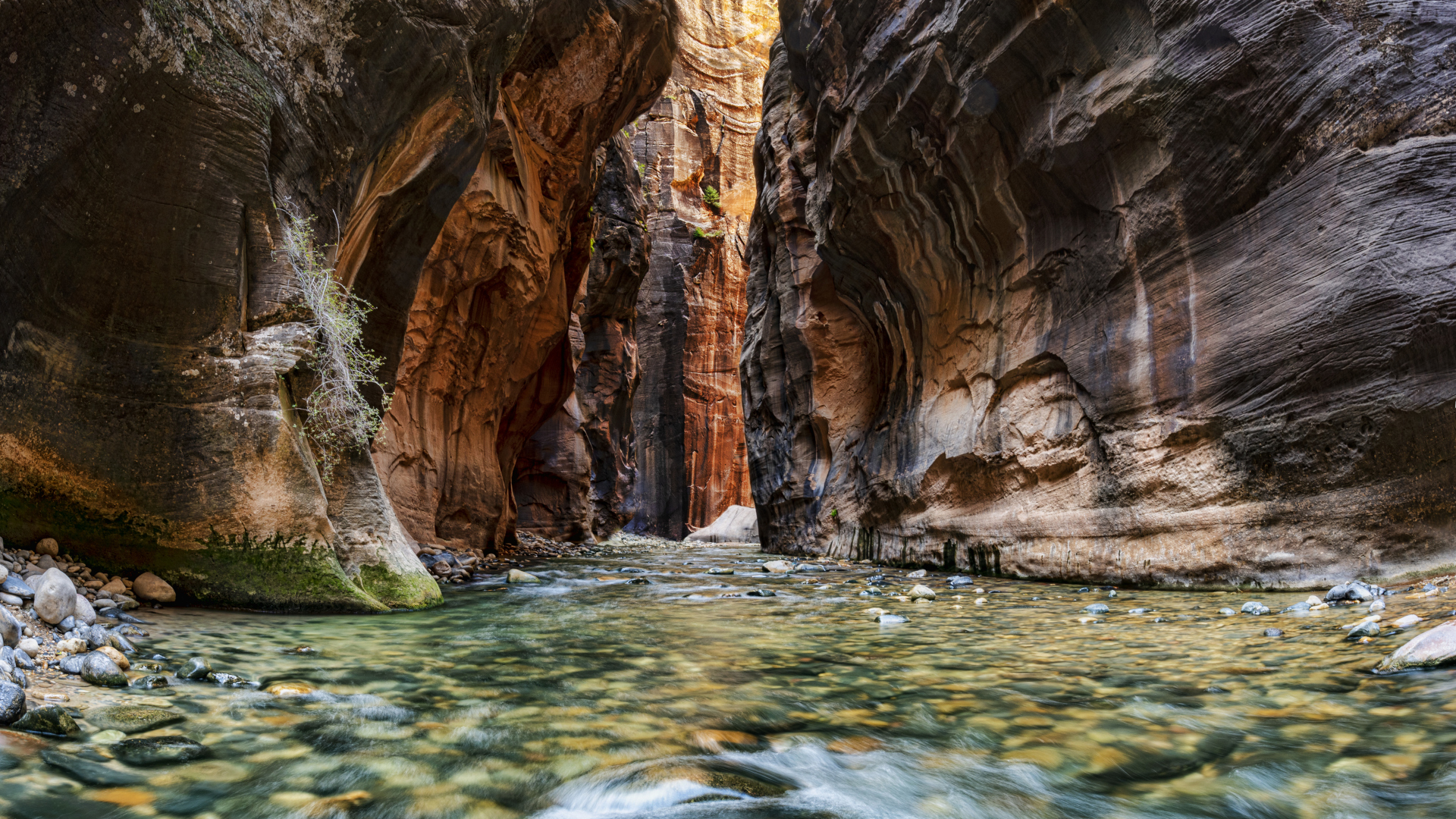How to hike the Narrows at Zion
We guide you through how to hike the Narrows at Zion for a once-in-a-lifetime experience

If you’re planning a trip to Zion, there are a few experiences likely to be on your list: Angels Landing, Observation Point and the Narrows are some of the best hikes in Zion National Park and not to be missed if you can avoid it. Of those three, however, the Narrows offers the most unique hiking experience and requires some special preparation. In this article we guide you through how to hike the Narrows at Zion so you know what to expect, what to wear and what you need to know to stay safe and enjoy this once-in-a lifetime experience.
What is the Narrows?
The Narrows is the narrowest section of Zion Canyon, around which the park centers. Zion Canyon is cut by the Virgin River and in the Narrows, the canyon walls are up to 1,000ft high while in parts the river is only 20ft wide. The result is a spectacular, 15-mile stretch of slot canyon situated on the North Fork of the river that showcases glistening sheer red rock walls and spectacular geological formations. The Narrows runs between Chamberlain’s Ranch, on private property just outside the park, to the Temple of Sinawava, a massive natural amphitheater that unofficially marks the entrance to the canyon.
Hiking the Narrows means that you’ll be splashing, wading, and even potentially swimming in the Virgin River.

How long does it take to hike the Narrows in Zion?
How long it takes to hike the Narrows depends on what way you go. If you start at the bottom and hike your way up, you can make it an easy hour-long jaunt or go in for a full 10 miles, a full-day affair. But start at the top and work your way down and you’re looking at a 16-mile adventure that could be one very long trek (think 12 hour) or, more likely, involves a two-day backpacking trip.
Can beginners hike the Narrows?
Beginners can definitely hike some part of the Narrows, although going in for the entire journey from top to bottom wouldn’t be recommended. Though it doesn’t pose the same challenges as hiking up a steep mountain, hiking through a river with slippery rocks on the bottom in a narrow canyon poses its own challenges and is hard work, both physically and mentally.
If you’re new to hiking, you can start at the Temple of Sinawava and walk for a mile up the paved trail where you’ll see incredible hanging gardens and cascading waterfalls. At the end of the paved trail, you could even continue for a little while in the river, turning back when you’ve seen enough. If your goal is to hike the entire length of the Narrows from the top down, you will definitely want to have more hiking experience and a decent level of physical fitness before you set off.

How to hike the Narrows at Zion
As we’ve mentioned, there are two ways to approach the Narrows at Zion – from the top down, or the bottom up.
All the latest inspiration, tips and guides to help you plan your next Advnture!
Hiking the Narrows from the top down
Hiking the Narrows from the top down requires a permit. On the 5th day of each month, permit applications open up for the following month, and they usually sell out within minutes. So, to do the hike this way you need to be prepared, set an alarm for the best chance to get a permit and have a backup plan in case you don’t get one. That said, there are last-minute permits that are issued the week before and some walk-in permits, which you can learn more about at Zion’s permit reservations page.
If you get a permit, you’ll probably want to arrange a private shuttle to take you to Chamberlain’s Ranch and leave your own car at the visitor’s center so it’s waiting for you when you finish your hike. There is parking near the trailhead at Chamberlain’s Ranch that you can use if you’re running a shuttle with a second car. There is a portable toilet here which park officials request you use before you begin, since there aren’t any rest stops on the way down. Note that camping is not allowed at the trailhead, so plan for an early start.
From the trailhead, cross the river and follow the road for three miles before entering the river at the end of the road just past the old cabin. From there, the enchanting journey begins through hidden grottos and natural springs. You’ll be hiking with other permit holders, but you won’t encounter any upstream hikers until you’re 11 miles in, so you’ll really get to immerse yourself in this natural wonder.

Hiking the Narrows from the bottom up
You do not need a permit to hike the Narrows from the bottom up, so once you’re in the park, this is always an option. Take the free park shuttle to stop #9, the Temple of Sinawava, and use the restrooms here as there aren’t any in the river (and the river is not a restroom). Follow the paved trail for a mile before entering the river. In this direction, you can go as far as the Big Spring section if you want, which makes for a magical 10 mile roundtrip hike, however you can simply wade for as far as you’d like, then turn back.
When to hike the Narrows
Needless to say, wading through a river is a very seasonal activity. The Narrows is often closed in the spring because runoff makes the river too high, while in winter it is technically possible, but very cold, the days are short and transportation is limited. Summer is great because it’s much warmer, which offsets the coolness of the water at the bottom of the shady canyon, and the days are long, however it’s busy, difficult to get a permit and the potential for dangerous flash flooding is high. Early fall is the best time to hike the Narrows, because the weather is still lovely but the crowds have quietened down and the water levels and risk of flash flooding are low too.
No matter what season you’re hiking the Narrows in, you’ll want to check the forecast and be prepared to change your plans. If there’s even a hint of rain in the forecast, you should not attempt to enter the canyon – many lives have been claimed by flash floods in the Narrows. Always use a reliable weather app, speak to park rangers the day of your hike and check the conditions of the canyon for flow rates and flash flood potential. If there is a risk of flash flooding, the Narrows will be closed, so have a backup plan for the day.

What do you need to hike the Narrows
Needless to say, you’re going to get wet. Most of the Narrows is ankle to knee deep, but if you have a permit to hike it from the top down, expect to have to swim in parts. Here’s what you’ll need:
- Lightweight hiking boots or shoes: Don’t attempt the Narrows in walking sandals, as you’ll want to protect your feet from rocks. Wear lightweight footwear with grippy Vibram soles.
- Waterproof socks: There’s no way to stop your shoes from getting wet, but you can help keep your feet warm with waterproof socks. If you’re going a long distance, consider wearing liner socks underneath them to prevent rubbing.
- Trekking poles: It’s tricky to keep your balance while walking in a river, so bring poles or a walking stick to help you avoid falling and test water depth.
- Wool or synthetic clothing: It’s cool in the shade and the water is always cold, so avoid cotton and wear shorts and a base layer or hiking shirt made from quick drying, breathable materials.
- Dry suit: Only if you’re hiking from the top down will you want this, but it basically looks like a boiler suit that you wear over your clothes for swimming through deep pools. You can rent these from local tour companies, along with other gear on this list.
- Dry bag: If you’re hiking from the top down, rent or bring a dry bag to carry your lunch, camera and water bottle and keep them safe.
Julia Clarke is a staff writer for Advnture.com and the author of the book Restorative Yoga for Beginners. She loves to explore mountains on foot, bike, skis and belay and then recover on the the yoga mat. Julia graduated with a degree in journalism in 2004 and spent eight years working as a radio presenter in Kansas City, Vermont, Boston and New York City before discovering the joys of the Rocky Mountains. She then detoured west to Colorado and enjoyed 11 years teaching yoga in Vail before returning to her hometown of Glasgow, Scotland in 2020 to focus on family and writing.

